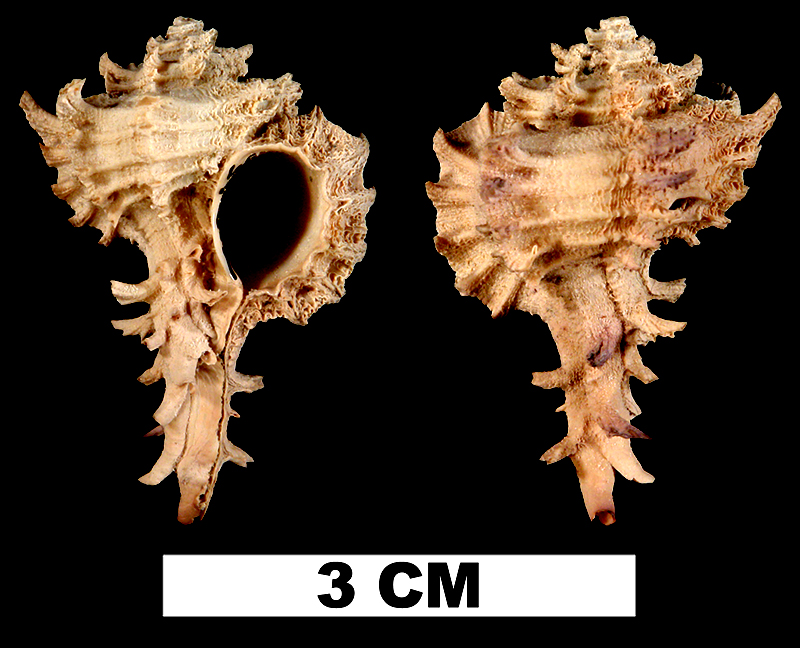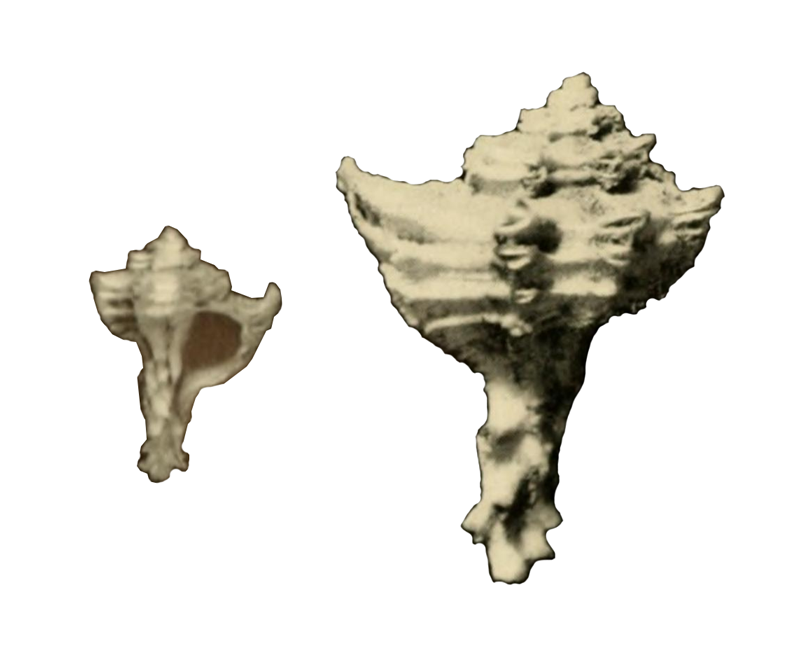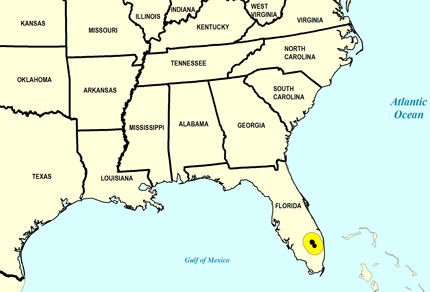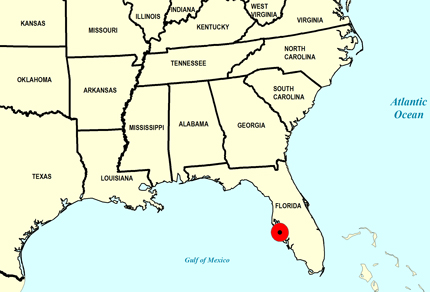
Favartia graceae
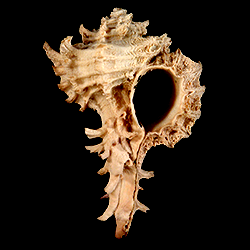
- Phylum: Mollusca
- Class: Gastropoda
- Order: Neogastropoda
- Family: Muricidae
- Genus: Favartia
- Species: Favartia graceae (McGinty, T.L., 1940)
Geological Range
Late Pliocene to Middle Pleistocene; Extinct.
Paleogeographic Distribution
Southern Florida.
Remarks
Original Description (from McGinty, 1940, p. 84):
"Shell small, spire low, about 5 whorls (nucleus lost), suture appressed, indistinct; whorls shouldered; about 7 foliated ribs or varices; ribs spined, stronger and some recurved on the crown; double row of basal spines in the siphonal region; aperture truncate-oval; canal straight, longer than the aperture. Height: 22 mm., width 16.8 mm.
Locality: Belle Glade, Palm Beach County. Horizon: Pliocene (?) Holotype in McGinty collection.
This attractive little shell is named for Grace Pilsbry, the discoverer. T. graceae can be distinguished from T. macgintyi by the lower spire, shouldered whorls, having larger recurved foliated spines on the crown and the straight canal."
To access this description in its original formatting through the Biodiversity Heritage Library, click here.
Synonymous with Murexiella graceae.
Stratigraphic Occurrences
- Middle Pleistocene
- Bermont Formation (S. FL)
- Late Pliocene
- Tamiami Formation (Pinecrest Beds) (S. FL)
